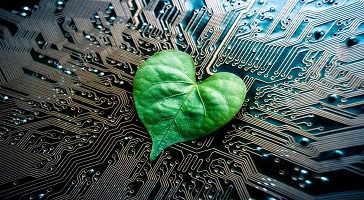Sustainability is being achieved by environmentally conscious companies by emphasizing the macro-trends behind sustainability and empowering engineers to reduce resource, energy, and labor consumption.
In order to reduce overall resource consumption, many organizations worldwide are placing sustainability at the forefront of their endeavors and are radically rethinking their products and processes. Sustainable thinking can help such forward-looking organizations deliver higher levels of innovation and creativity.
Customers too, in B2B and B2C markets, are becoming more selective and want to deal with organizations keen to be green. Consequently, sustainable product design can play a critical role in establishing environmental credentials and protecting brand reputations.
With concerns about climate change and the realization that resources are finite and must be managed conservatively and wisely, sustainability has become increasingly important in the engineering community. Many product engineers spend considerable time refining designs to minimize materials, energy, and labor usage, along with thinking about how to integrate products harmoniously into their surroundings.
The role of design engineers in enhancing sustainability cannot be overstated. According to research conducted by the European Commission’s EU science hub, over 80% of product-related environmental impacts are determined during the product’s design phase. Reengineering a product’s sustainability is difficult – it must be built from the ground up.
Sustainable product design can also make an organization more attractive to future workers, which is crucial in an era of skill shortages. Young engineers and graduates have lived most of their lives in the context of the climate crisis, and many have a personal stake in Net Zero and the circular economy. As a result, sustainability is also a valuable recruiting tool for the best and brightest talent – the very people who will deliver a greener future.
Academia has a crucial role to play. The current curriculum needs to reflect the urgency of climate change, resource depletion, and chronic ecological damage. If not, curriculum changes must be made immediately. To establish a new vision for eco-design for the future, governments, academic organizations, and engineering institutions will have to play a leadership role.
Upskilling the workforce and enabling people to produce things more sustainably are also important. The industry is concerned that we are approaching a Net Zero skills gap, and we must work collaboratively to address those potential shortfalls.
Creating a Sustainability Checklist:
While all companies will approach sustainability differently, some standard guidelines are worth considering as a starting point. Among them are:
- Materials/Traceability: Where are the materials sourced from? How are they extracted and made ethically?
- Energy efficiency and manufacturing efficiency: Have your manufacturing processes been optimized to minimize environmental impacts? Has the energy mix been decarbonized in any way? How can IoT be used to increase efficiency?
- Do you have a water management strategy that is reviewed annually? Is wastewater recyclable and reusable?
- Modularity: Is it possible to design for modularity to encourage component replacement and upgrade?
- Repairability / Obsolescence: Can components be easily accessed and repaired with readily available replacements that are not likely to become unavailable soon? How will repairability affect business models and revenues?
- Packaging: To reduce its environmental impact, has the packaging design been optimized and replaced with biodegradable materials, where possible?
- Logistics: How well are your logistics operations utilizing cleaner technologies, such as electrification?
- Repurposing: Are your products easily disassembled at the end of their useful lives, encouraging the reuse of relevant components rather than disposal?
- End-of-life reuse: Do you have any take-back programs that encourage recovery and recycling as part of the circular economy?
- Have you performed any real-world product performance evaluations, feeding data back into the design process? Is it possible to use this data to improve the durability and performance of existing or future products?
At every stage of a product’s life cycle, a comprehensive lifecycle analysis is required – from the processing of raw materials to the manufacture, distribution, use, repair, and manufacturing, as well as disposal.
It is likely that many companies will already be asking these questions as sustainability becomes an increasingly important aspect of product design. The green economy will emphasize complementary skills such as communication, ethics, and critical thinking in addition to technical expertise.
Putting Sustainability into Practice
As companies move towards more sustainable operations, they have also rethought processes to reduce resource consumption. In the circular economy, raw materials are designed to last longer in production lifecycles through maintenance, reuse, and remanufacturing, resulting in less waste. There are always new strategies and approaches that can be adapted to deliver better (and more sustainable) results in the circular economy – it illustrates that product design is a nonlinear process.
Sustainable design benefits businesses as well as the environment. The engineer’s role will be crucial in putting these principles into action.
Authored Article by: Shiv Bhambri, RS India









